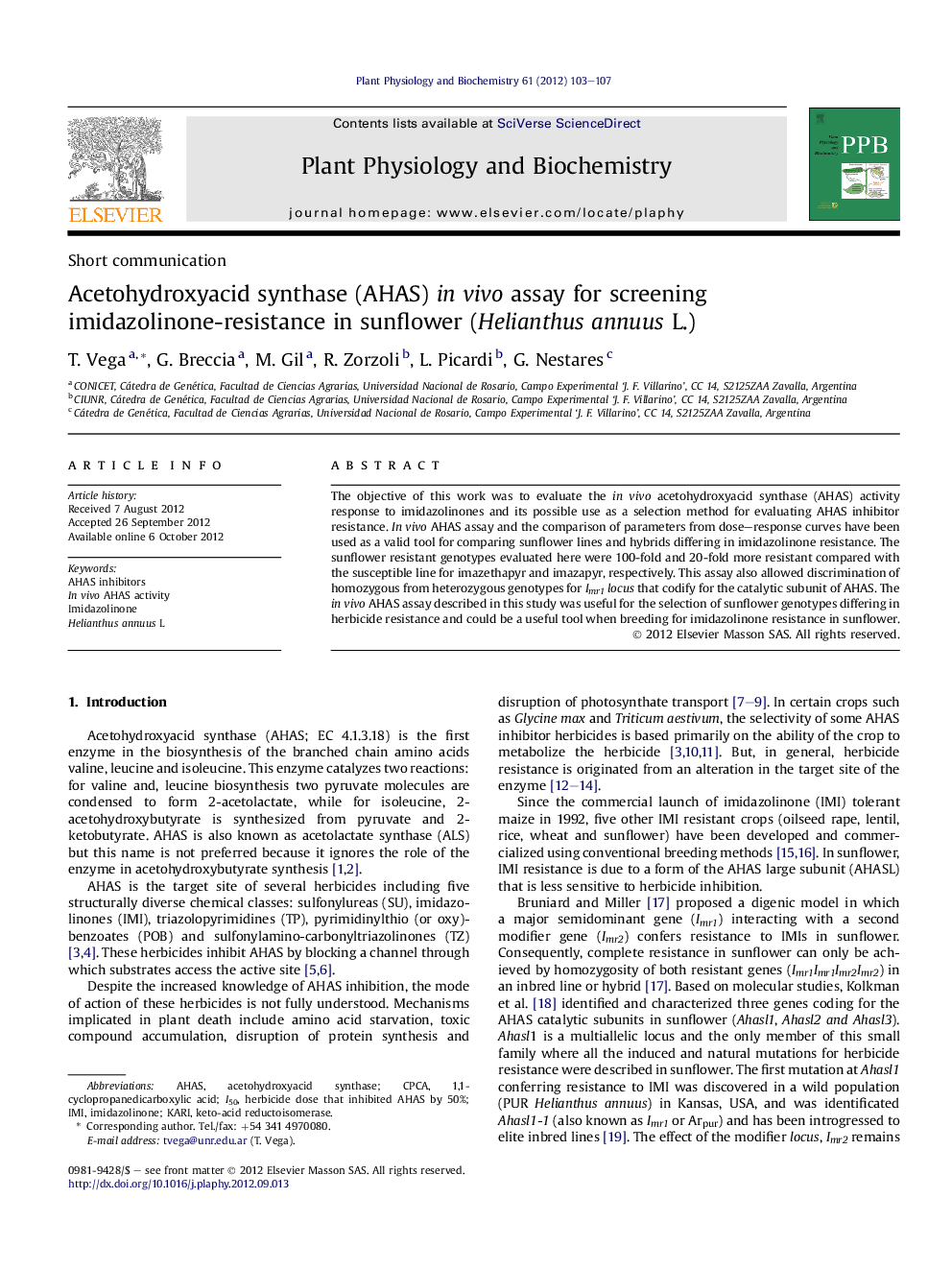| Article ID | Journal | Published Year | Pages | File Type |
|---|---|---|---|---|
| 2014970 | Plant Physiology and Biochemistry | 2012 | 5 Pages |
The objective of this work was to evaluate the in vivo acetohydroxyacid synthase (AHAS) activity response to imidazolinones and its possible use as a selection method for evaluating AHAS inhibitor resistance. In vivo AHAS assay and the comparison of parameters from dose–response curves have been used as a valid tool for comparing sunflower lines and hybrids differing in imidazolinone resistance. The sunflower resistant genotypes evaluated here were 100-fold and 20-fold more resistant compared with the susceptible line for imazethapyr and imazapyr, respectively. This assay also allowed discrimination of homozygous from heterozygous genotypes for Imr1locus that codify for the catalytic subunit of AHAS. The in vivo AHAS assay described in this study was useful for the selection of sunflower genotypes differing in herbicide resistance and could be a useful tool when breeding for imidazolinone resistance in sunflower.
► We evaluated the in vivo AHAS activity response to imidazolinones in sunflower. ► We compared dose–response curves' parameters of resistant and susceptible sunflower lines. ► Sunflower resistant genotypes were 100- and 20-fold more resistant than susceptible line. ► Dose–response curves comparison was a valid tool for the diagnosis of sunflower IMI resistance.
